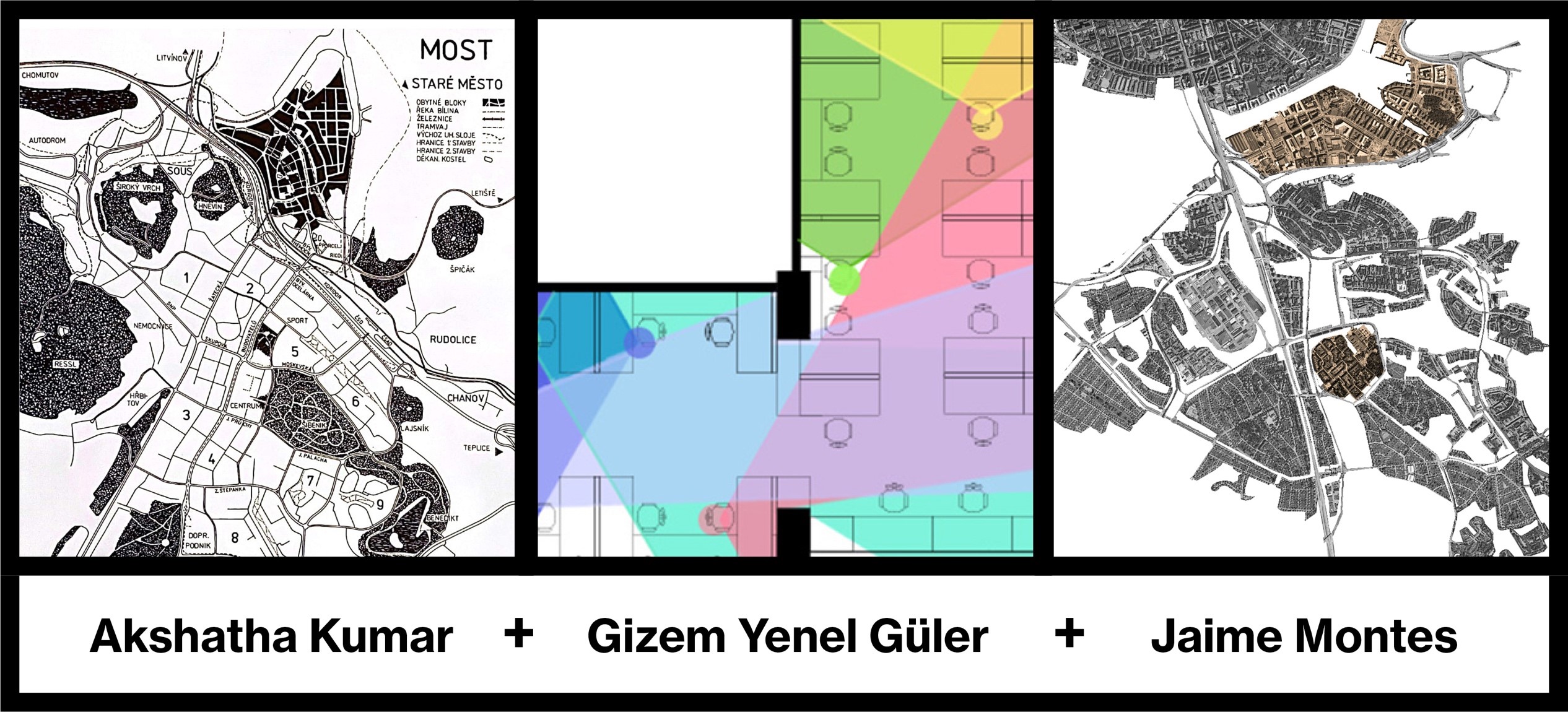Akshatha Kumar - Learning from the City of Most
- Mining Induced Displacement and Resettlement

Today we will be welcoming our guest PhD researchers Akshatha Kumar, Gizem Yenel Güler and Jaime Montes to the research envionment. The session will include a short presentation from each of the guests followed by a general discussion.
Tid: Fr 2024-03-08 kl 13.15 - 16.15
Plats: Conference Room 6th Floor of the Architecture School Room A608
Videolänk: https://kth-se.zoom.us/j/67185547897
Akshatha Kumar - Learning from the City of Most: Mining Induced Displacement and Resettlement
An urban environment is a complex organism that reflects the interplay between the spatial and social dimensions, historical trajectories, and human aspirations. The City of Most, located in the Ústí nad Labem Region of the Czech Republic, is at the intersection of these multifaceted dimensions with its rich legacy of urban resettlement due to brown coal mining. Nový (New) Most, established in the 1970’s, is a delight for architectural study since it was reinvented based on the older city model, but with new modernist principles.
This research aims to understand Most's socio-spatial dynamics of the resettled city, offering a fresh perspective on the city's transformative journey over the past 50 years. This odyssey of urban exploration is focused on understanding the trichotomy between the envisioned "designed city", the emergent "created city" and the tangible "lived-in city." It is not just a study of architectural interventions, but an endeavor to capture the essence of spaces through the understanding of its inhabitants. Two generations post-resettlement, Most's residents offer a repository of insights that transfuse into the built environment, reinvigorating it with their unique perceptions of "history and identity." By comparing these subjective narratives with objective spatial analysis, this research presents a comprehensive portrait of Most as an intriguing focal point to study the dynamics of Mining-Induced Displacement and Resettlement (MIDR) and identify the challenges and consequences of MIDR in relation to urban transformation.
This study is built on an architectural research that analyzed the city of Most during its displacement process in 1975 and aims to conclude by completing the temporal loop of examining Most as a post-occupancy city. Central to this inquiry is a crucial question: can the experience of the City of Most contribute to the urban design and planning of MIDR cities? Hence, this research employs a robust methodology that combines qualitative narratives with quantitative spatial assessments, unveiling insights from Most's experiences. It highlights the potential of interweaving urban design principles with residents' lived experiences, paving the way for cities that are not just sustainably designed, but also resonate deeply with their inhabitants' collective ethos.
Gizem Yenel Güler - The effects of generic and targeted visibility on work-process interactions in open-plan offices
The lack of visual privacy due to increased visibility in open-plan offices outweighs the main advantage of these offices: employee interaction. Therefore, this study, adopting the space syntax approach, aims to fill this gap by concentrating on the relationship between visual privacy and work-process interactions in open-plan offices through generic and targeted visibility analyses.
Jaime Montes - From the Functionalist to the Sustainable suburb. Elements of continuity and discontinuity in the urban space in Sweden between 1975 and 2010.
The thesis looks into housing developments built after 1975 outside the consolidated city, that reintroduced typology of the grid and the perimeter block, aiming to describe suburbia from its specific qualities. It focuses in the south-east suburbs of Stockholm where can be found examples built in the decades of 1970s, 1980s and 1990s, and can be put in relation to developments of different decades of the 20th century, when each period has defined its own model based on a street pattern and a housing typology, responding to the specific questions that address circumstances, needs and trends of each period.
The early sustainable city was in many ways a response to the problematic of zoning, sprawl and car dependency of the functionalist city, while the functionalist city was a response to the problematic derived from the polluted and overcrowded Industrial city. Rather than in isolation or in opposition to each other, the different periods are studied as part of a larger sequence of construction of suburbia, which allows to localize aspects of discontinuity, such as changes in the design elements; and aspects of continuity, such as the role they play and in the way they are conceived in relation to the existing city. In the long run, it is aimed to transform this knowledge into to the formulation of the challenges, questions and functions that shall shape the design of the sustainable suburbia.
